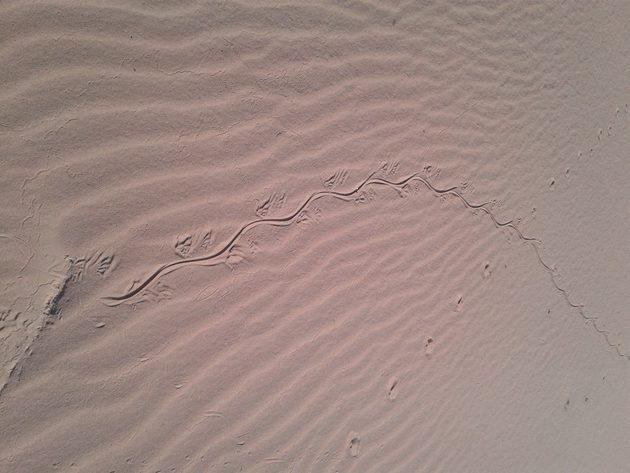
We have always known that Pied Oystercatchers nest in the same areas that Sand Goannas roam. We have often suspected that the Sand Goannas would steal eggs as a food source from the Pied Oystercatcher nests if they found them. There have been occasions over the years where it looks like it may have happened, but never a lot of substantial evidence.
During this last week we went to check on the two pairs of Pied Oystercatchers between the Surf Club and Gantheaume Point. The two pairs should have been close to hatching their eggs from their first clutch. The pair of Pied Oystercatchers to the north have now laid a second clutch of two more eggs.
As we moved into the dunes we noticed Sand Goanna tracks. This is not unusual, but we soon realised that the tracks were heading towards the nest site of the first pair of Pied Oystercatchers. The header photo shows the tracks of the Sand Goanna and a Pied Oystercatcher. We found more tracks where the Pied Oystercatchers had been running beside the Sand Goanna. There was no sign of the Pied Oystercatchers at all, but the tracks were all very fresh.
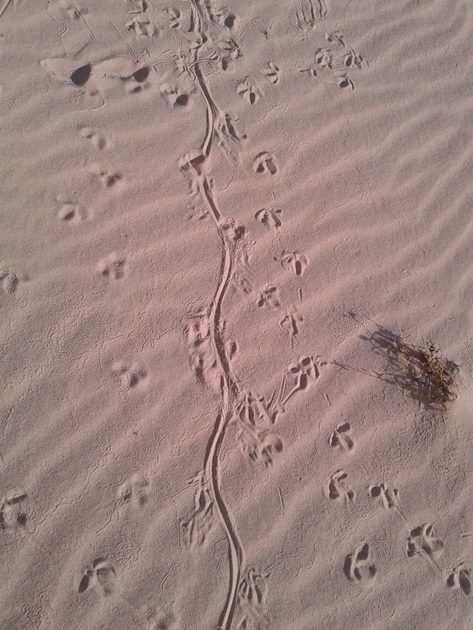
Sand Goanna and Pied Oystercatcher prints
As we approached the nest site we could see that we had just missed out on witnessing the devastating loss of the two Pied Oystercatcher eggs. Had we arrived sooner the result may have been different or maybe it would have made no difference. It was quite distressing to see all of the Pied Oystercatcher footprints all around the nest site. There were no end of lines in the sand where the Pied Oystercatchers had clearly dragged their wings trying to use a “broken wing” display to distract the Sand Goanna. The heavier wide line is the Sand Goanna and all of the multiple lines are the wing tips of the Pied Oystercatchers dragging their wings through the sand. The rocky outcrop is where the nest was.
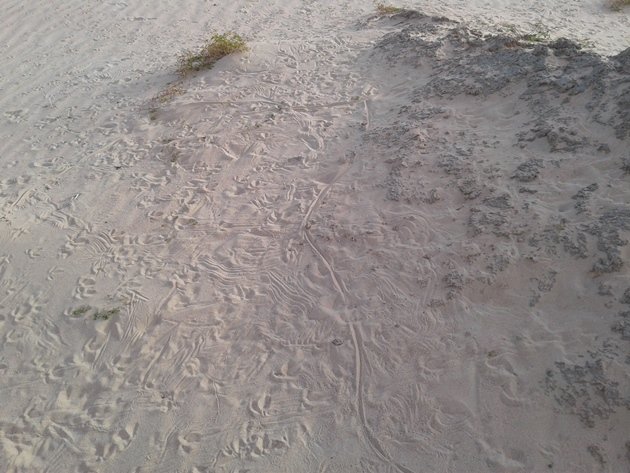
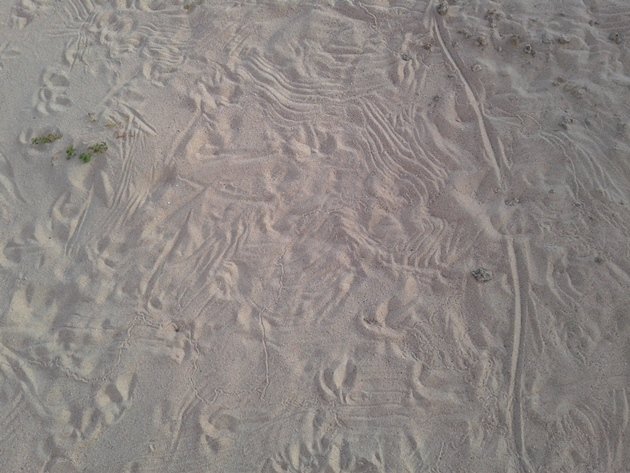
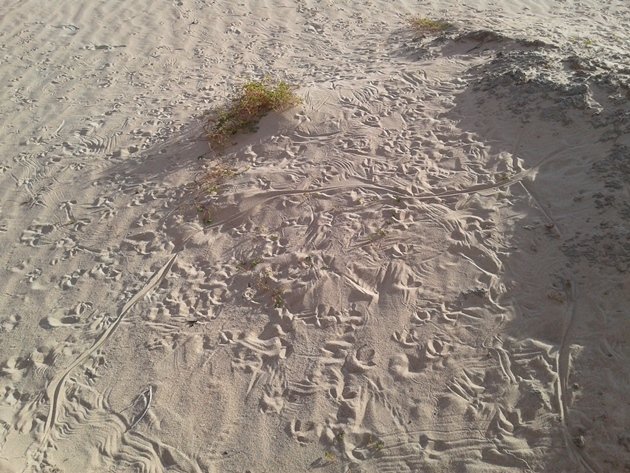
Pied Oystercatcher and Sand Goanna tracks around the nest site
The actual nest site had a lot of evidence of moisture from the two Pied Oystercatcher eggs that had been eaten by the Sand Goanna. The whole area was covered in the tracks belonging to both the Sand Goanna and the pair of Pied Oystercatchers. We could follow the Sand Goanna tracks and see that it retreated back up into the dunes with the Pied Oystercatchers hard on its tail.
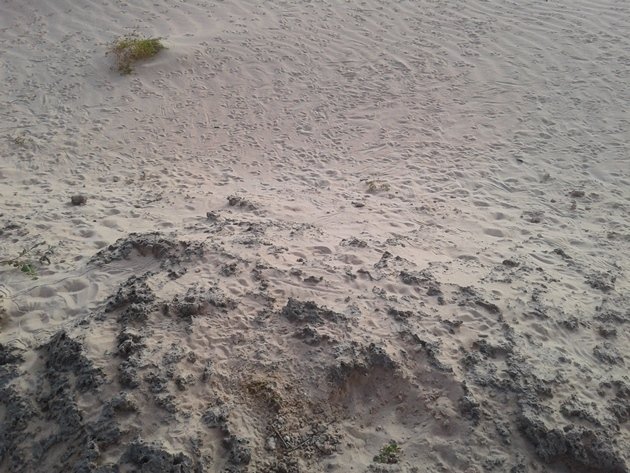
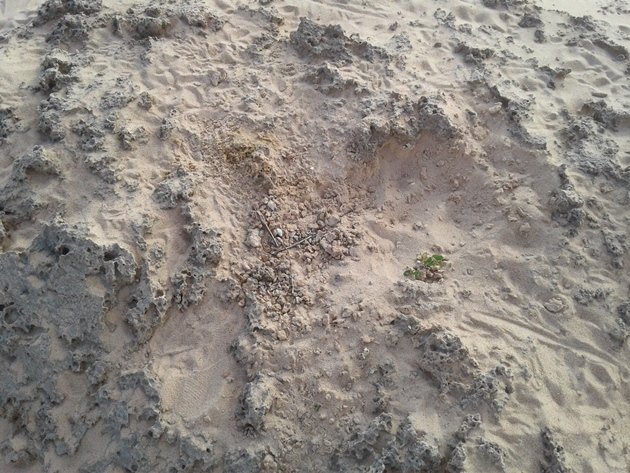
The moist Pied Oystercatcher nest site after the thieving
It was not a good result at all and not what we had hoped to find. We have to understand, though, that this was a natural predator and not one of our introduced feral cats or foxes.
When we went to check on the other pair of Pied Oystercatchers we found that their eggs had indeed hatched. One adult Pied Oystercatcher was returning from the reef with food, so we knew there were no longer eggs to incubate. As we approached there was a threat which saw both parents take to the sky. Black Kites are common around Broome and they are not appreciated by the Pied Oystercatchers at all. The Black Kite was actually just cruising the coastline alone, but got attacked for its trouble. However, it did continue on and the Pied Oystercatchers returned to the dunes.
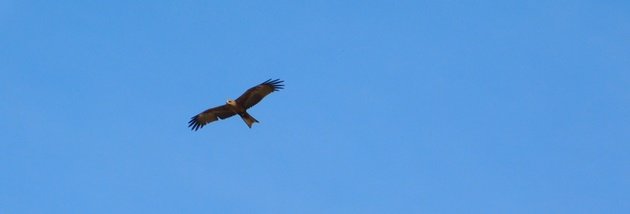
Black Kite soaring overhead
We had realised that the Pied Oystercatchers were no longer at the nest site, but a little distance away. There were three sets of recent Pied Oystercatcher footprints. We don’t know what happened to the second egg. The chick was only a couple of days old and there was not an egg in the nest. It is highly likely that the other Pied Oystercatcher chick had already been predated, which is often the case in the first week.
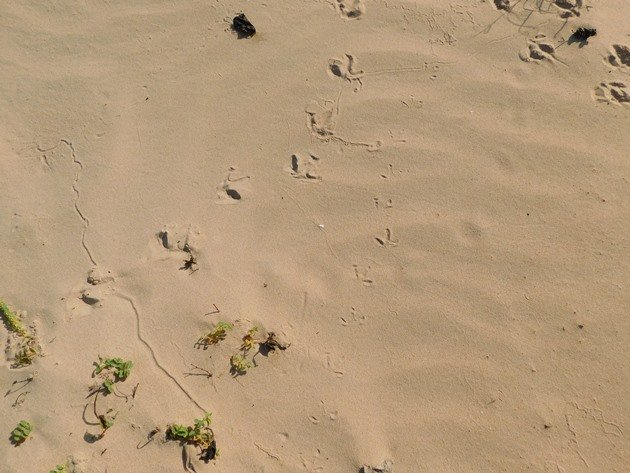
Adult and chick Pied Oystercatcher chicks
We sat well back for some time and watched the area until we worked out where the Pied Oystercatcher chick was being hidden. There is plenty of vegetation for the chick to hide in. The chick is just to the right of the adult bird in the photo below in the shade.
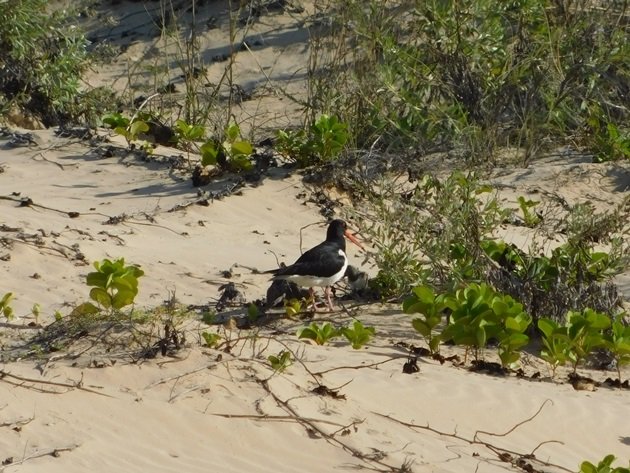
Pied Oystercatcher and chick
The Pied Oystercatchers moved around the vegetation and collected food for the chick. They called out when there was danger and once again flew upwards when a pair of Brown Goshawks flew along the top of the dunes. The chick was obedient and did not move out of the shadows until the call changed. It then moved out onto the open sand to follow its parents.
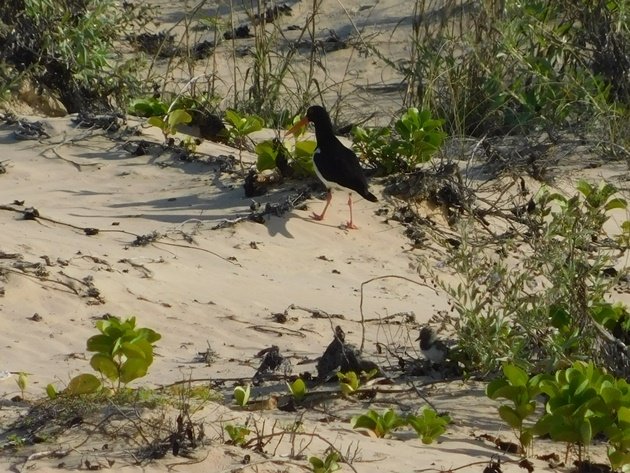
Pied Oystercatcher chick in the shadows
I appreciate that the Pied Oystercatcher chick may not be really obvious, so I have outlined it below.
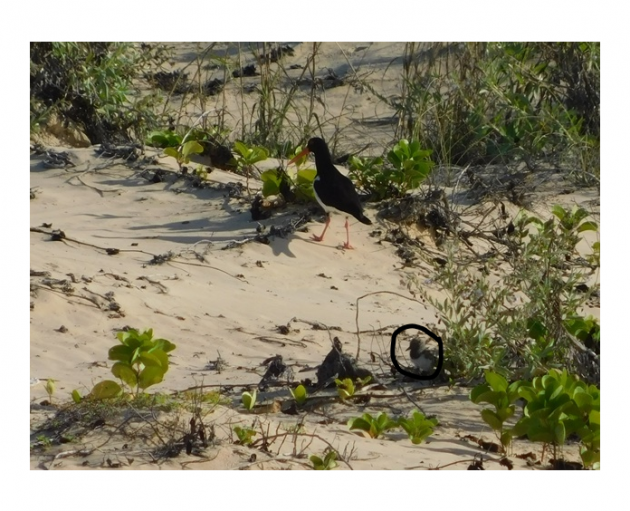
The Pied Oystercatcher chick circled!
Over the next few days we expect the Pied Oystercatcher family to make the trek two kilometres down the beach to Gantheaume Point. They use this strategy each year and food is a lot more accessible there and there are plenty of places for a Pied Oystercatcher chick to hide until it can fly. Last year they were successful at raising one chick, so we just have to hope they are this year too.











Leave a Comment